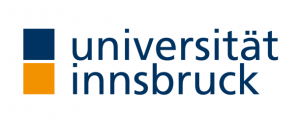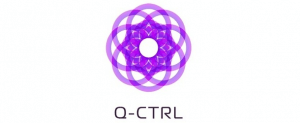Quantum News Briefs May 24: SandboxAQ’s quantum navigation system passes initial test flights with US Air Force; QuTech makes quantum breakthrough, enhances Andreev spin qubit for more stable quantum computing; Innsbruck researchers build quantum repeater node for the standard wavelength of telecommunication networks + MORE

Quantum News Briefs May 24: SandboxAQ’s quantum navigation system passes initial test flights with US Air Force; QuTech makes quantum breakthrough, enhances Andreev spin qubit for more stable quantum computing; Innsbruck researchers build quantum repeater node for the standard wavelength of telecommunication networks and transmit quantum information over tens of kilometers + MORE.
SandboxAQ’s quantum navigation system passes initial test flights with US Air Force
SandboxAQ announced it has successfully tested its advanced, quantum sensor-based magnetic anomaly navigation system with the U.S. Air Force (USAF). The test flights, conducted last week at Travis Air Force Base by the 60th Air Mobility Wing, were part of an ongoing readiness and modernization effort to explore and develop an Assured Positioning, Navigation, and Timing (APNT) solution to augment the Global Positioning System (GPS). Such solutions will provide uninterrupted navigation in situations where GPS is unavailable or intentionally denied or spoofed.
In January 2023, the USAF awarded SandboxAQ a Direct-to-Phase-II Small Business Innovation Research (SBIR) contract to research quantum navigation technologies. “The need for GPS-alternatives is critical,” said Maj. Patrick Morgan, Wing Tactics. “If we’re executing a mission where GPS is not available, it’s important to have another solution to ensure mission continuity and ensure a safe exit and return to base for our Airmen.”
As part of last week’s Exercise, Golden Phoenix, SandboxAQ’s quantum navigation prototype was installed aboard a USAF C-17 GlobeMaster III military transport aircraft and successfully received geomagnetic navigation data on the ground and during multiple in-flight tests, completing its test flight milesto
QuTech makes quantum breakthrough, enhances Andreev spin qubit for more stable quantum computing
 Researchers from QuTech improved the so-called ‘Andreev spin qubit’ in a critical way and believe it can become a prime candidate in the pursuit of a perfect qubit. The new type of qubit is created in a more reliable and intrinsically stable way, compared to previous versions, by combining the advantages of two other types of qubits. They published their work in Nature Physics.
Researchers from QuTech improved the so-called ‘Andreev spin qubit’ in a critical way and believe it can become a prime candidate in the pursuit of a perfect qubit. The new type of qubit is created in a more reliable and intrinsically stable way, compared to previous versions, by combining the advantages of two other types of qubits. They published their work in Nature Physics.
Unlike the world of conventional computers, wherein bits are based on very well established and reliable technologies, the perfect qubit has not been invented yet. Will the quantum computer of the future contain qubits that are based on superconducting transmon qubits, spin qubits in silicon, NV centers in diamond, or perhaps some other quantum phenomenon? Each type of qubit has their own advantages—and disadvantages. One is more stable, the second has a higher fidelity, and others are more easily mass-produced. The perfect qubit does not exist. Yet.
Marta Pita-Vidal, co-first author, explained, “Two of the most promising types are spin qubits in semiconductors and transmon qubits in superconducting circuits. However, each type has its own challenges.”
”For example,” Pita-Vidal continued, “spin qubits are small and compatible with current industrial technology, but they struggle with interacting over long distances. On the other hand, transmon qubits can be controlled and read out efficiently over long distances, but they have a built-in speed limit for operations and are relatively large. The researchers in this study aim to harness the advantages of both types of qubits by developing a hybrid architecture that combines them.”
Principal investigator Christian Andersen stated: “The current Andreev spin qubit is not perfect yet. It still needs to demonstrate multi-qubit operations, which is needed for universal quantum computers. The coherence time is also sub-optimal. That can be improved by using another material. Fortunately, the scalability of the qubits is on par with semiconductor qubits, raising the hope that we can get to the point where making the quantum algorithms becomes the limiting factor and not the quantum hardware.” Click here for announcement in-entirety.
Innsbruck researchers build quantum repeater node for standard wavelength of telecommunication networks and transmit quantum information over tens of kilometers
 Quantum physicists led by Ben Lanyon from the Department of Experimental Physics at the University of Innsbruck have now succeeded in building the core parts of a quantum repeater — a fully functioning network node made with two single matter systems enabling entanglement creation with a photon at the standard frequency of the telecommunications network and entanglement swapping operations. Results were reported in Science Daily May 23 and summarized here by Quantum News Briefs.
Quantum physicists led by Ben Lanyon from the Department of Experimental Physics at the University of Innsbruck have now succeeded in building the core parts of a quantum repeater — a fully functioning network node made with two single matter systems enabling entanglement creation with a photon at the standard frequency of the telecommunications network and entanglement swapping operations. Results were reported in Science Daily May 23 and summarized here by Quantum News Briefs.
Quantum networks connect quantum processors or quantum sensors with each other. This allows tap-proof communication and high-performance distributed sensor networks. Between network nodes, quantum information is exchanged by photons that travel through optical waveguides. Over long distances, however, the likelihood of photons being lost increases dramatically. As quantum information cannot simply be copied and amplified, 25 years ago Hans Briegel, Wolfgang Dür, Ignacio Cirac and Peter Zoller, then all at the University of Innsbruck, provided the blueprints for a quantum repeater. These feature light-matter entanglement sources and memories to create entanglement in independent network links that are connected between them by a so-called entanglement swap to finally distribute entanglement over long distances.
The repeater node consists of two calcium ions captured in an ion trap within an optical resonator as well as single photon conversion to the telecom wavelength. The scientists thus demonstrated the transfer of quantum information over a 50-kilometer-long optical fiber, with the quantum repeater placed exactly halfway between starting and end point. The researchers were also able to calculate which improvements of this design would be necessary to make transmission over 800 kilometers possible which would allow to connect Innsbruck to Vienna.
The current results were originally published in Physical Review Letters. Funding for the research was provided by a START award from the Austrian Science Fund FWF, the Austrian Academy of Sciences and the European Union, among others. Lanyon’s team is part of the Quantum Internet Alliance, an international project under the EU Quantum Flagship. Click here to read Science Daily article in-entirety.
Q-CTRL boosts European quantum tech presence with new offices in UK and Germany
 Q-CTRL, a global leader in developing useful quantum technologies through quantum control infrastructure software, announced on May 16 the company’s continued global expansion in Europe with office openings in Germany and the UK.
Q-CTRL, a global leader in developing useful quantum technologies through quantum control infrastructure software, announced on May 16 the company’s continued global expansion in Europe with office openings in Germany and the UK.
With these new offices, Q-CTRL is well positioned to add talent to its world-leading research team, collaborate with European partners and customers to explore quantum computing’s potential, and strengthen strategic relationships in the defense applications of quantum sensing. By cementing its local presence, Q-CTRL will also join an emerging community of startups in the European Quantum Industry.
Q-CTRL’s Berlin office will be part of EU-centric R&D activities drawing from Germany’s strong research base and local talent. It will take advantage of one of the strongest tech and creative industries in Europe with close proximity to an emerging set of companies using quantum computing to solve new challenges.
The Berlin office will be led by Dr Andre Carvalho, Q-CTRL’s Head of Quantum Control Solutions. Carvalho is building a solutions team attracting experts in quantum control, quantum information, and quantum hardware. The team will engage local customers to ensure technical success, lead original research, and establish new business with European partners.
The expansion into the UK builds on the AUKUS trilateral security partnership between Australia, the UK, and the US. Announced in September 2021, the partnership sets out to enhance joint defense capabilities by focusing on cyber capabilities, artificial intelligence, quantum technologies, and additional undersea capabilities. Q-CTRL’s active development of a new class of “software-defined” quantum sensors enabling navigation without GPS aligns directly against these objectives, and provides an opportunity for strong technical collaboration with local experts.
Q-CTRL’s UK presence gives the company direct access to some of the most important industry-focused efforts in quantum technology. Q-CTRL has already established a commercial relationship with the UKRI’s National Quantum Computing Centre (NQCC), and will work to expand its support for the local finance sector as it begins adopting quantum computing. In addition, Q-CTRL will partner with defense and civilian end users of its advanced quantum sensors to advance applications in resources, navigation, and climate monitoring.
Q-CTRL currently employs more than 90 staff across its Product, Research, Engineering, and Operations Divisions, and the company is actively seeking expressions of interest for job candidates for multiple roles in the new European offices. Click here to read complete announcement on Q-Ctrl website.
Sandra K. Helsel, Ph.D. has been researching and reporting on frontier technologies since 1990. She has her Ph.D. from the University of Arizona.



















